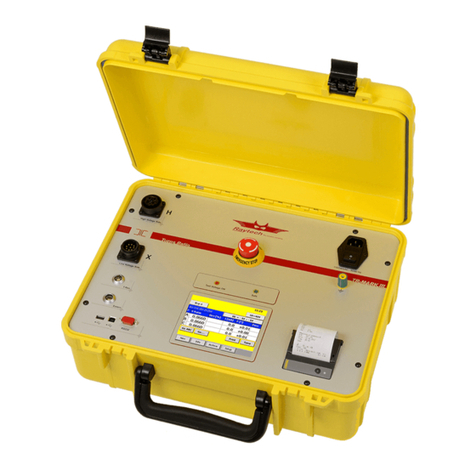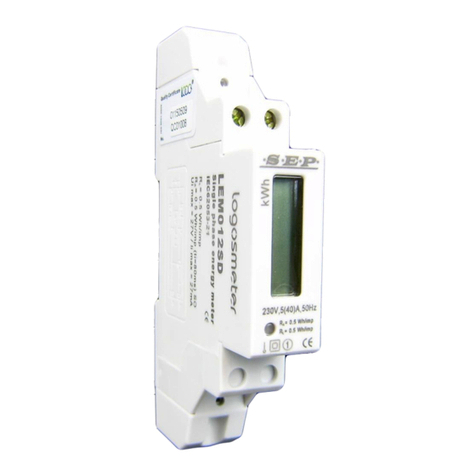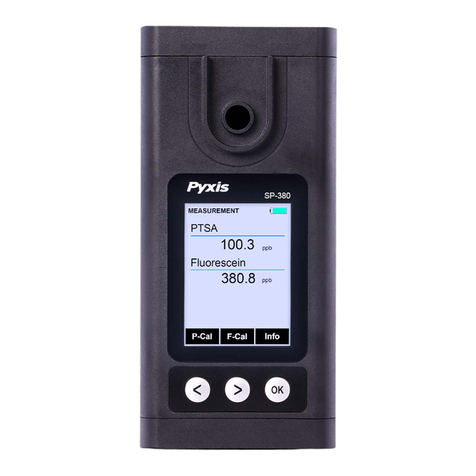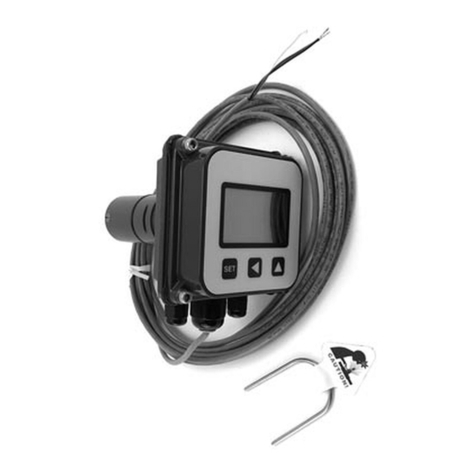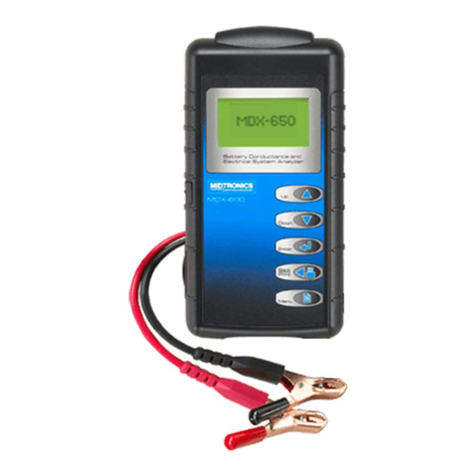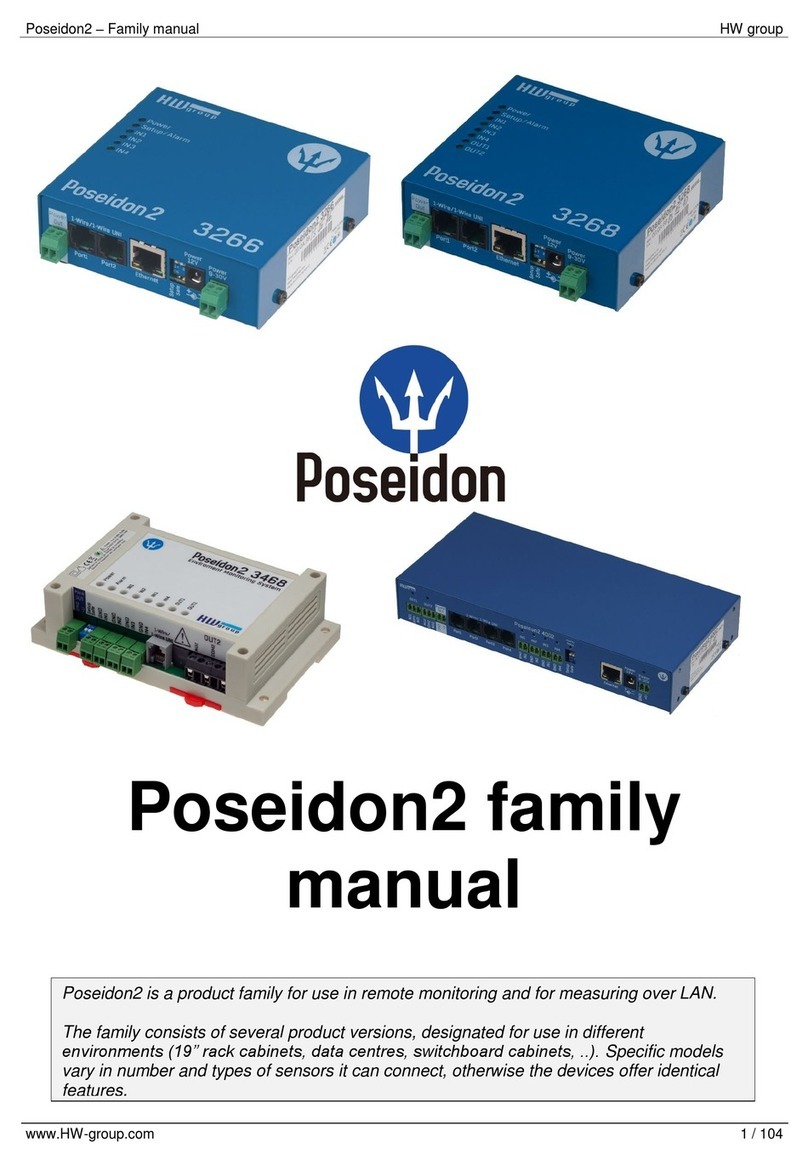CROSSTEX Accutron Digital Ultra User manual

1
Digital Ultra™Flowmeter
User Manual
Nitrous Oxide/Oxygen Sedation
• Flushmount
• Flexmount
• Digital Newport™ Flowmeter System
Nitrous Oxide/Oxygen Sedation

2
INDICATIONS FOR USE
To be used in nitrous oxide-oxygen sedation systems for delivering to a patient a mixture of
nitrous oxide and oxygen gases with a maximum nitrous oxide concentration of 70%.
CONTRAINDICATIONS
Contraindications for use of nitrous oxide/oxygen inhalation may include:
1. some chronic obstructive pulmonary diseases;
2. severe emotional disturbances or drug-related dependencies;
3. first trimester of pregnancy;
4. treatment with bleomycin sulfate;
5. methylenetetrahydrofolate reductase deficiency.
6. severe asthma
Whenever possible, appropriate medical specialists should be consulted before administering
analgesic/anxiolytic agents to patients with significant underlying medical conditions (e.g.,
severe obstructive pulmonary disease, congestive heart failure, sickle cell disease, acute oritis
media, recent tympanic membrane graft, acute severe head injury.1Operator must review
patient history with regard to these health issues.
1American Academy of Pediatric Dentistry. Clinical Guidelines: Guidelines on Use of Nitrous Oxide for Pediatric
Dental Patients. Pediatr Dent 2009;31(6):148-151. Available at: “http://www.aapd.org/media/policies.asp”.
Accessed February 23, 2010.
WARNINGS
To be used only by a professional trained in the use of nitrous oxide, using titration method.
Patient should always be closely monitored during nitrous oxide use. If patient has an
adverse reaction, reduce or stop the flow of nitrous oxide as needed. The O2flush button
can be used to rapidly purge the lines of N2O. If patient does not show signs of quick recov-
ery, remove nasal hood and treat with pure oxygen from either the O2resuscitator fitting
or an auxiliary oxygen tank using a demand valve, oxygen assisted manual resuscitator, or
equivalent. Call for emergency assistance if rapid response is not achieved.
Do not use this device for the administration of general anesthesia or as part of, or in con-
junction with, a general anesthesia administration system.
For use with 100-240 V AC, 50/60 Hz only.
Use only hospital grade power cord connected to an equivalent receptacle marked “Hospital
Only” or “Hospital Grade.” For emergency power shut-off and isolation, unplug power cord
from wall outlet.
Unit is calibrated at the factory to ±5% per industry recommendations.
Verify that the correct gases are being delivered to the correct flowmeter inlets by perform-
ing the oxygen failsafe test in section VII.
NIOSH recommends N2O levels in operator area be kept below 25 PPM.
Administer pure oxygen to patient for at least 5 minutes after nitrous oxide
procedure.
Contaminants, especially greases and oils can catch fire in the presence of oxygen. Do not
allow hand lotions or unapproved lubricants to touch seals, gaskets, or gas contact surfaces.
Take care to keep oxygen ports/lines clean and covered unless changing cylinders or
moving portables within a facility. Movement between facilities requires repackaging in
original protective packaging. Failure to do so may cause fire and may void warranty.

3
CAUTIONS
Federal (U.S.) law restricts this device to sale by or on order of a dentist or physician.
Do not attempt to repair, alter, or calibrate this device. Unauthorized repair, alteration
or misuse of this device is likely to adversely affect the performance and will void the
warranty.
Safety features contained in this notice should be routinely checked to assure proper
function. If any of these safety features are not functioning properly, contact your dealer
or Crosstex and arrange for the necessary repairs before reusing the machine.
Always use clean, dry medical gases. Introduction of moisture or other contaminants into
analgesia gas machines may result in defective operation.
Users of electronic flowmeters that control % oxygen should be aware that Accutron
Flowmeters control % nitrous oxide.
ELECTROMAGNETIC COMPATIBILITY (EMC)
This equipment passes radiated emissions requirements for CISPR 11 Class B devices
and EM field immunity requirements of IEC6100-4-3. Operating other radio frequency
devices in the vicinity of this equipment should be evaluated accordingly. The minimum
distance between this equipment and other RF devices is given by the formula below and
the table. The minimum distance is determined by the power of the RF device operating
in the vicinity of the digital flow meter.
Warning: Changes or modifications to the equipment may result in
unsafe operation.
Recycling
Old electrical and electronic equipment must be disposed sepa-
rately and may not be included in the regular domestic waste.
Dispose in accordance with prevailing ordinances. Alternatively,
the unit can be handed over to Crosstex for correct recycling.
Power Distance (meters) Distance (feet or inches)
0.01 Watts 0.258 10 inches
0.1 Watts 0.816 2 feet and 8 inches
1 Watts 2.58 8 feet and 6 inches
10 Watts 8.16 26 feet and 9 inches
over Operating the digital flow meter within close
10 Watts proximity of such a transmitter is not recommended.
d = ______ meters
minimum distance: 0.388
(Power)

4

5

Table of Contents Page
Warnings and Cautions .............................................2
I. Technical Specifications .............................................7
II. Control/Display Features ...........................................8
III. Digital Flowmeter Models
Flushmount .......................................................10
Flexmount ........................................................12
Digital Newport™ Flowmeter .......................................14
IV. Safety Features.....................................................18
V. General Instructions ................................................18
VI. Directions for Use ..................................................19
VII. Periodic Equipment Checks .........................................23
VIII. Troubleshooting Guide .............................................25
IX. Warranty..........................................................26
X. Warranty & Returned Goods Policy ..................................27
XI. Repair Service Policy ...............................................27
XII. Assistance.........................................................27
XIII. Ownership Information .............................................27
6

7
I. TECHNICAL SPECIFICATIONS
Physical
Flushmount Main Unit 8x4x7.5” (20,3x10,2x19 cm) Weight: 5.2 lbs (2,4 kg)
Flushmount Controller 9x4x1.5” (22,9x10,2x3,8 cm) Weight: 1.0 lbs (0,8 kg)
Flexmount 8x4x7.5” (20,3x10,2x19 cm) Weight: 8.2 lbs (3,7 kg)
Digital Newport™ Flowmeter 19x32x22” (48x80x56 cm) Weight: 75 lbs (34 kg)
Electrical
100-240 V AC 50/60 Hz. 24 W
Socket is IEC/EN 60320-1 C14 and accepts an IEC/EN 60320-1 C13 connector
Power cords available for most countries
Internal Battery
Lithium coin battery, 3v CR2032
Fuses
T500mAL, 250v (quantity 2) part number 26456-FRU
Gas Supply
Oxygen: 100 LPM at 50-66 psi (3.5-4.5 bar)
Nitrous Oxide: 10 LPM at 50-66 PSI (3.5-4.5 bar)
Gas Fittings
Oxygen Inlet: Male DISS CGA 1240
Nitrous Oxide Inlet: Male DISS CGA 1040
Mixed Gas Outlet: Male DISS CGA 1160 or 1/4” Hose Barb
Oxygen Resuscitator Connection: 1/4” I.D. Quick Disconnect
Gas Delivery
Total Flow: Legacy 1.0-9.9 LPM, Hi-flo 1.0-18.0 LPM O2 % 30-100 N2O %: 0-70
Oxygen Flow: Legacy 1.0-9.9 LPM Hi-flo 1-18 lpm
(accuracy per ISO 15002, greater of ± 0.5 lpm or ±10% Flow)
Nitrous Oxide Flow: Legacy 0-6.9 lpm Hi-flo 0-12.6 LPM
(accuracy per ISO 15002, greater of ± 0.5 lpm or ±10% Flow)
Oxygen Flush: Minimum 20 LPM
Oxygen Resuscitator Flow: Minimum 100 LPM, 100% O2
Environmental
Transportation/Storage: Temperature: -40°C to +70°C (-40°F to 158°F)
Humidity: 10-100%
Operating Conditions: Temperature: 15°C to 32°C (68°F to 90°F)
Humidity: 30-75%
Atmospheric Pressure: 72-101 kPa (543-760 mmHg)
Accessories
Printer
Remote Control
Applied Part (rated BF)
PIP+™ Scavenging Circuit II PN 32007
PIP+™ Remote Flow System Scavenging Circuit II PN 32009
ClearView™ Scavenging Circuit II PN 43004
ClearView™ Remote Flow System Scavenging Circuit II PN 43005
Axess™ Scavenging Circuit PN 53005
Axess™ Remote Flow System Scavenging Circuit PN 53006

8
% N2O
Display
Decrease
% N2O
Increase
% N2O
N2O Bar
Display
O2Bar
Display Total Flow
Display
Information LEDs
in this area
Increase
Total
Flow
Increase
Total Flow
Decrease
Total
Flow
Decrease
Total Flow
Power
(On/Off)
Power
(On/Off)
O2Flush
O2
Flush
O2
Display
N2O
Display
Print
Vacuum LED
Cancel/Test
Increase
% N2O
II. CONTROL/DISPLAY FEATURES
Front Control/Display Panel
Remote Control
Decrease
% N2O

9
Front Control/Display Panel & Remote Control
Control/Display Panel – Easy-to-use control panel allows setting Total Flow and N2O
concentration with the touch of a finger. Bright, color-coded displays make it simple to
monitor status, even from a distance. Optional hand-held Remote allows functional control
at patient chairside.
Total Flow Control – Allows setting of Total Flow in either (.1) LPM or (.5) LPM increments.
Once set, the Total Flow will remain constant even if % N2O is changed.
Total Flow Display – Shows Total Flow in numeric LPM format with yellow LEDs.
% N2O Control – Allows setting of N2O concentration in either 1% or 5% increments up to a
maximum of 70%. Once set, % N2O will remain constant even if Total Flow is adjusted.
% N2O Display – Shows % N2O in numeric format with blue LEDs.
Power – Turns unit on and off with the push of a button.
Flush Control – Ceases N2O Flow and provides a minimum of 20 LPM of pure O2as long as
button is pressed.
O2Flow – Two green LED displays show O2Flow in both LPM numbers and
graphic bars simulating standard flow tube.
N2O Flow – Two blue LED displays show N2O Flow in both LPM numbers and graphic
bars simulating standard flow tube.
Print – When optional printer is installed, provides printout of current conditions.
Cancel/Test – During an alarm mode, turns off audio alarm for one minute. During normal
mode, performs self-check of all displays.
Information LEDs – Informs administrator of failures with O2supply, N2O
supply, O2flush, or mixed gas line to patient. Also indicates if remote vacuum is connected.
Model Numbers and Configurations
Model numbers have a 5 digits base number that indicates a basic configuration such as
56100. Some models may have additional differences and will have an additional -XX or -
XXX on the end of the base number such as 56100-UK or 56100-AUS. Unless otherwise
noted, all -XX or -XXX models are essentially the same as the base models and will not be
listed separately in each section. For Example, if it references 56100 it applies to 56100-UK,
56100-SS, 56100-BWR etc. unless stated otherwise.

10
Lorem ipsum
Green Light
MIN
MAX
V A C
O
2
MAX
Flushmount Remote Outlets Options
FLUSHMOUNT MODEL
a) Standard
(Contains mixed
gas outlet and
O2resuscitator
connection)
c) Accu-Vac™ Electronic Vacuum Controller
(Contains mixed gas outlet,
O2resuscitator, and vacuum
controller with LED display)
b) RFS™ Remote
Flow System
(Contains mixed
gas outlet, O2
resuscitator, and
vacuum controller
with gauge display)
Sample Installation
Two piece design for easy installation into a cabinet or a wall. Thin control module
located away from main module, power, and gas lines, requires remote outlet.
III. FLOWMETER MODELS

11
O2Inlet – Labeled
O
2IN – Equipped with male CGA 1240 DISS fitting to prevent gas
mix-up.
N
2
O Inlet
–
Labeled N
2
O IN – Equipped with male CGA 1040 DISS fitting to prevent gas
mix-up.
O
2Out – Labeled
O
2OUT – Equipped with male CGA 1240 DISS fitting, provides oxygen
for resuscitator.
Mixed Gas Port – Equipped with male CGA 1160 DISS fitting (Medical Air)
Power Cord Inlet – Clearly labeled 100-240 V AC, 50/60 Hz and protected by two fuses for
added safety. Fuses are 240 V, 0.5A, slow-blow. To disconnect power, unplug cord. Do not
position where this disconnection would be difficult.
RS232 Printer Connector – Clearly labeled and designed for use with optional
Crosstex-approved printer.
Remote Control Connector – Remote Control connection. Using the Remote
Control, general adjustments can be made from a distance of up to 10 feet
away from device.
Remote Vacuum Valve Connector – Clearly labeled and designed to actuate a
vacuum valve in the Accu-Vac™ Automatic Vacuum Scavenging Port (PN 56955).
O
2
Out Connector – Direct connection to oxygen for use with resuscitator. Provides
minimum of 100 LPM of oxygen.
100-240 V AC Inlet
IEC/EN 60320-1 C14
with two fuses.
(Accepts IEC/EN
60320-1 C13 connector)
Remote Control
Remote Vacuum 12 V DC Out
sends start/stop signal to Accu-Vac™
Electronic Vacuum Controller
RS232 Printer
Mixed Gas Out (O2/N2O)
– Connects to remote bag
tee outlet
O2Inlet
DISS
N2O Inlet
DISS
Flushmount Main Module Utility Connections
O2Out – Connects to O2
Resuscitator fitting on
remote outlet

12
Can be mounted on
a number of different
devices.
4-Cylinder Portable System
Setup per instruction 28372
Mobile Stand
Setup per instruction 27420
9" Wall Arm 16" Bi-fold Wall Arm Telescoping Wall Arm
(Extends 12"-17")
Flexmount Mounting Options
Warning! Portable systems are designed for movement within a facility. Care must be
taken that contaminants do not enter gas ports/lines. Keep hoses/cylinders attached unless
changing. See Warning on page 2.
O2Resuscitator Fitting
Mixed Gas Port for Bag Tee
FLEXMOUNT MODEL
51000 series, 56100 series, 56200 series, 56300 series, 56400 series, 56500 series
All wall arms use instruction 28931

13
Remote Control
Remote Vacuum 12 V DC Out
sends start/stop signal to Accu-Vac™
Electronic Vacuum Controller
RS232 Printer
100-240 V AC Inlet
IEC/EN 60320-1 C14
With 2 Fuses
(Accepts IEC/EN
60320-1 C13 connector)
Mixed Gas Out (O2/N2O) –
Connects to bag tee port on
front of unit
O2 OUT – Connects to
O2 Resuscitator fitting
on front of unit
O2Inlet
DISS
N2O Inlet
DISS
Note: Australian
version has SIS
fittings and
slightly different
layout.
4 Cylinder version
Wall Arm and Mobile Stand version
100-240 V AC Inlet
IEC/EN 60320-1 C14
With 2 Fuses
(Accepts IEC/EN
60320-1 C13 connector)
Mixed Gas Out (O2/N2O) – Connects
to bag tee port on front of unit.
Newer models may
look slightly different.
O2 OUT – Connects to
O2 Resuscitator fitting
on front of unit
O2Inlet
DISS
Remote Control Remote Vacuum 12 V DC output RS232 Printer
N2O Inlet
DISS

14
Tank
Restraint
If printer option is
installed, printer cable will
extend from cover at this
point.
Gas
Cylinders
Line
Pressure
Gauges
Removable
Bag Tee
O2
Resuscitator
Fitting
Remote
Control Port
(Optional)
Regulators and
E Yokes
Flexmount Utility Connections
O2Inlet – Labeled
O
2IN – Equipped with male CGA 1240 DISS fitting to prevent gas
mix-up.
N
2
O Inlet – Labeled N
2
O IN – Equipped with male CGA 1040 DISS fitting to prevent gas
mix-up.
O
2Out – Labeled
O
2OUT – Connects to oxygen resuscitator fitting on front.
Mixed Gas Out – Connects to bag tee port on front.
Power Cord Inlet – Clearly labeled 100-240 V AC, 50/60 Hz and protected by two fuses
for added safety. Fuse ratings are 240 V, 0.5 A, slow-blow. To disconnect power, unplug
cord. Do not position meter where this disconnection would be difficult.
RS232 Printer Connector – Clearly labeled and designed for use with optional
Accutron-approved printer.
Remote Control Connector – Remote Control connection. Using the Remote
Control, general adjustments can be made from a distance of up to 10 feet
away from device.
O
2
Out Connector – Direct connection to oxygen resuscitator fitting on front. Provides
minimum of 100 LPM of oxygen.
DIGITAL NEWPORT™ FLOWMETER SYSTEM
Handle
Warning: Do not
hold handle
when
opening
cabinet.
Power Socket
Note: Power Cord must be either
unplugged from socket or unwound from
storage cleats when opening Newport
™
Flowmeter System
.
To disconnect power, unplug cord. Do not
position where this would be difficult.
10’
Hospital
Grade
Power
Cord

15
View
–
When looking at the front of the Newport™ Flowmeter System cabinet, Nitrous
Oxide is on the left as shown by the blue Nitrous Oxide gauge. Oxygen is on the right as
shown by the oxygen gauge.
Opening Newport™ Flowmeter System Cabinet
– Open the Newport™ Flowmeter System
by placing one hand on the front cover and the other in the handle on the side. Pull handle
back all the way. Make sure the power cord is unplugged from the socket in the skirt first.
Do not hold push handle when opening as it may pinch fingers.
Install Gas Cylinders
–
1. Undo Velcro straps
2. Angle tank into position
3. Strap tanks loosely
4. Remove regulators from accessories box
5. Attach regulators to tanks by loosening yoke handle, verifying seal is in
place, aligning seal with gas opening, aligning pins with holes in yoke,
tightening yoke onto cylinder
NOTE: Regulators are pinned to match gas cylinders. Connect gas hoses to regulator
outputs.
NOTE: Hoses and regulators use DISS fittings to prevent mix up. Rotate cylinders so that
regulators fit inside.
Open Gas Cylinders
–
Pick one tank of each gas to be “in use“ tank and attach “in use”
label to cylinder. Open these cylinders using the cylinder wrench provided in accessory box.
Close Newport™ Flowmeter System cabinet.
Connect Power
–
1. Plug cord back into skirt outlet
2. Plug other end of cord into receptacle
NOTE: System will operate from 100-240 V, 50-60 Hz. Internal power supply will switch
automatically.
Scavenging Circuit
–
- Install bag tee from accessories box into front of Newport™ Flowmeter System.
- Attach scavenging circuit to bag tee.
- Connect vacuum hose to system vacuum.
- Install nasal hood into scavenging circuit and start vacuum flow per
scavenging instructions.
Start up
–
See Section VII , Directions For Use
Digital Newport™ Flowmeter System Setup
and Connections

16
Digital Newport™ Flowmeter System: Managing Gas Supply
Note: Power Cord must be either unplugged from socket or unwound from storage cleats when open-
ing Newport™ Flowmeter.
1. Identify the two in-use tanks (N2O and O2) by attaching “in-use” identification tags
to them.
2. When one of the in-use tanks is empty, close the tank by turning the valve clockwise.
Leave the empty tank in place.
3. Move the “in-use” tag to the appropriate reserve tank, which now becomes the in-use
tank. Replace the empty tank with a new tank, which then becomes the reserve tank.
4. Open the valve of the new in-use tank by turning counterclockwise.
Note: Do not open the reserve tank until the in-use tank is empty. When changing
gas tanks, make certain both same gas cylinders that are involved in the exchange are
closed. Always remember to switch the “in-use” tags over to the new tanks.
5. Contact gas supplier to request new gas cylinders as needed.
Digital Newport™ Flowmeter System: Changing Gas Cylinders
Always use clean, dry medical grade gases. Introduction of moisture or other contaminants
into Accutron Analgesia gas machines may result in defective operation.
The Digital Newport™ Flowmeter System is designed to operate with a 50-55 psi line
pressure on each gas (O2and N2O). The line pressure can be determined by reading the
O2and the N2O line pressure gauges that are located on the front panel of the Newport™
Flowmeter.
The Digital Newport™ Flowmeter System has features incorporated to make cylinder
change-out easy. To assure proper operation of the system, 4 cylinders must be properly
installed at all times. Please review the following cylinder replacement procedures before
attempting to change cylinders.
Note: Power Cord must be either unplugged from socket or unwound from storage cleats when open-
ing Newport™ Flowmeter.
1. Open the tank enclosure by sliding the cover to the rear.
2. Close the valve on the empty tank (clockwise).
3. Release the restraint on the empty tank.
4. Tilt the empty tank out slightly.
5. Loosen the round handle on the regulator yoke.
6. Remove the regulator from the empty tank (make certain that the regulator is not
dropped or damaged while it is off the tank).
7. Lay the empty cylinder down on the floor (cylinders should only stand upright when
properly restrained as they can easily fall over).
8. Pick up the full replacement tank and place the bottom of the tank onto the floor of
the Newport™ Flowmeter, leaving it slightly tilted outward for easy replacement of
the regulator.
9. Check to assure that the sealing gasket has remained on the regulator’s E yoke.
10. Reattach the regulator to the new full tank by sliding the yoke (attached to the
regulator) over the top of the tank post aligning the index pins with the
corresponding holes in the tank post.
11. Tighten the round handle on the regulator yoke.
12. Push the tank into an upright position. Attach and tighten the tank restraint.

17
Control
Module
is behind
shield at
front of
unit.
Serial #
Label
Main flowmeter module
is behind shield at rear
of unit. Fuses are located in
fuse tray at power
cord socket on back of flow-
meter.
Digital Newport™ Flowmeter System:
Control Module and Main Module Locations

18
IV. SAFETY FEATURES
O2Fail Safe System – Offers assurance that N2O ceases if the O2supply is interrupted or
reduced. Alarm will sound, FAILURE OXYGEN LEDs will light, and N2O flow will cease.
N2O Supply Warning – Triggers an alarm if the N2O supply cannot keep up with user’s
needs. Alarm will sound and FAILURE NITROUS LEDS will light. Flow switchs to 100%
oxygen.
Mixed Gas Flow to Patient – Monitors pressure in mixed gas line and triggers an alarm if
flow to patient is obstructed. Alarm will sound and FAILURE NITROUS OXYGEN LEDS
will light.
Emergency Air Valve – Automatically provides patient with ambient air if gas flow is
interrupted. Located on remote bag tee.
Directional Check Valve – Prevents re-breathing of exhaled gases and protects against CO2
buildup. Located on remote bag tee.
O2Resuscitator Connection – Direct connection to O2for use with resuscitator. Port is
always open and provides 100 LPM minimum of pure oxygen.
Gas Specific Connections - DISS or SIS fittings allow only correct connections to gas hoses.
and regulators. Pin Index Safety system only allow correct connections to gas cylinders.
V. GENERAL INSTRUCTIONS
1. Warranty
Unpack Digital Ultra™ Flowmeter and inspect to make certain that the unit has not been
damaged during shipment.
The unit’s serial number is located on the back of Digital Ultra Flowmeter (see page 17 for
Digital Newport™ serial number location). Record the serial number in the area provided at
the back of this booklet. Once Digital Ultra™ Flushmount Flowmeter is mounted into a cabi-
net, the serial number will no longer be visible. Always reference the serial number when
corresponding with Crosstex.
Complete the warranty card supplied with Digital Ultra Flowmeter System and mail to
Crosstex. Completion of this step ensures proper device warranty coverage. Accutron
Digital Ultra™ Analgesia Machines carry a two-year limited warranty (see Warranty on
page 26 for details).
2. Gas Supply Connection
Always use clean, dry medical gases. Introduction of moisture or other contaminants into
Accutron analgesia gas machines may result in defective operation.
After device installation, connect the oxygen and nitrous oxide supply lines to the Diameter
Specific Instant fittings or DISS fittings located on the back of the device. See pages 14-16
for information specific to the Digital Newport
™ Flowmeter System
. It is important that the
regulators for both gases be set to give pressures in the range of 50-60 PSI.
Verify that the correct gases are being delivered to the correct ports on device before initial
use. This can be done by performing the oxygen failsafe test in section VII. Correct before
using.

3. Power Connection
Device is designed to run on 100-240 V AC and 50/60 Hz. There is no need to flip an
external switch as the unit automatically adjusts for any power. A medical-grade power
cord is required and supplied with US units and must be used per regulations. It is
important that in the US, this US power cord be plugged into an outlet marked “Hospital
Only” or “Hospital Grade.” International units do not have this requirement. The power
cord is plugged into the AC entry, which contains two fuses and is located on the back of
the device. International power cords are offered for some countries while others are given
Schuko cords along with adapters to fit their country. Use only 240 V, 0.5A, slow-blow fuses.
Fuses can be ordered from Crosstex as part number 26456-FRU.
4. Auxiliary Connections
Plug remote control into remote port on back of Digital Ultra™ Flowmeter or on front cover
of Digital Newport™ Flowmeter System if ordered as option.
Plug Accu-Vac™ Electronic Vacuum Controller signal line into vacuum connector on back
of Digital Ultra Flowmeter (Flushmount only). Vacuum LED should light when Digital Ultra
Flowmeter is powered indicating vacuum is flowing.
Plug printer cable from Able printer, if used, into RS232 printer port. Do not use this port
for any other devices. If printer is ordered on Digital Newport™ Flowmeter System as
option, printer cable will extend from front cover. Note: Use only Able printer supplied by
Crosstex.
VI. Directions For Use
Read instructions completely before operating Digital Ultra® Flowmeter device.
Note: The steps listed below provide a basic functional description of the Digital Ultra™
Flowmeter usage. A training course that emphasizes a practical, hands-on approach combined
with instructions on safe techniques for administration of nitrous oxide-oxygen (sedation) is
recommended before use of this flowmeter. Do not use this device for the administration of
general anesthesia or as part of, or in conjunction with, a general anesthesia administration
system. Unit must be connected to O2and N2O gases at 50-55 PSI. Unit must be plugged into
100-240 V AC, 50/60 Hz power outlet. Use titration method for administering nitrous oxide.
Power button will shut off Digital Ultra™ Flowmeter normal functions (reference diagram on page
8). For Emergency shutoff, unplug power cord.
NOTE: Detailed information on users, patients, and conditions can be found at the end of section VI.
General Operating Instructions
Setup:
Verify the presence of separate means of oxygen resuscitation and that appropriate staff
are trained in its operation.
WARNING: In cases of adverse reactions, discontinue nitrous oxide procedure, remove
scavenging circuit, utilize auxiliary resuscitation measures and equipment, and con-
tact Emergency Responders (911).
Verify that oxygen and nitrous gases have not been mixed up by performing the
Oxygen Failsafe Test on page 23. Note: the only significant source of injury from
nitrous oxide procedures is gas mix-up.
Open inlet gas supplies for oxygen and nitrous oxide by:
a. Turning on manifolds in central systems or
b. Opening gas cylinders in Newports and 4 cylinder mobile stands
Verify scavenging vacuum is turned on and properly set per scavenging circuit
Instruction for Use Verify power to flowmeter
19

20
Operation:
1) Push POWER button on front membrane or on Remote Controller.
(Initial flow is set to 5.0 lpm at factory but can be adjusted per instructions on
page 21)
2) Install scavenging circuit per scavenging circuit Instructions for Use.
3) Adjust proper breathing flow by using the TOTAL FLOW and TOTAL FLOW
buttons. Reservoir bag should inflate and deflate in response to patient breathing
but never go completely full or completely empty. (Increments are set at factory
to 0.5 lpm but can be reset to 0.1 lpm increments per instructions on page 20).
4) Gradually add nitrous oxide by using the % N2O. It is recommended that % start
at 10% and be increased by 10% intervals until desired reaction is achieved. Allow
time between each change for patient to adjust since rapid increasing of N2O % can
cause nausea. (Increments are set at factory to 5% but can be adjusted to 1% per
instructions below)
Note: Total flow does not change if % N2O changes and % N2O does not change
if Total Flow changes.
Caution! Accutron controls % N2O. Refer to page 22 for possible Use Error for
those who are used to meters that control % O2 such as Matrx®Flowmeter.
5) Max % N2Ois set at the factory to 70%. This limit can be changed to 50% by
following instructions on page 21.
6) Adjust Total Flow and % N2O as needed to maintain proper anxiety relief and
proper flow levels.
7) Turn % N2O to 0 at the end of the procedure by using the % N2O. Continue with
pure oxygen for 5 minutes.
8) Stop gas flow by pushing POWER at the end of the procedure. Remove scavenging
circuit and close vacuum.
Additional Functions:
Print - If a Printer is installed, a snap shot of current O2flow, N2O flow,
Total Flow, % N2O, Time and Date can be printed by pushing PRINT.
Mute - During an alarm condition, sound is muted by pushing CANCEL/TEST
Led Test - During normal operation, CANCEL/TEST will cycle though all Leds to
verify all are operational
Flush - A minimum 20 lpm of pure oxygen will flow when FLUSH is pushed
Setting Step Size of Total Flow and % N2O
1. To set the % N2O step size to 5%: Plug in Digital Ultra™ Flowmeter and leave off. Press
and hold % N2O Up (+) button until beeps (approx. 5 seconds).
2. To set the % N2O step size to 1%: Plug in Digital Ultra Flowmeter and leave off. Press
and hold % N2O Down (-) button until beeps (approx. 5 seconds).
3. To set Total Flow step size to 0.5 LPM increments: Plug in and turn off Digital Ultra
Flowmeter. Press and hold Total Flow Up (+) button until beeps (approx. 5 seconds).
4. To set Total Flow step size to 0.1 LPM increments: Plug in and turn off Digital
Ultra Flowmeter. Press and hold Total Flow Down (-) button until beeps (approx.
5 seconds).
Setting Date and Time
1. Plug in Digital Ultra™ Flowmeter and leave off.
2. Press and hold Print button down until beeps (approx. 5 seconds). This will start
year setting.
3. Display will show 20 in % N2O box and flashing display in Total Flow box.
4. Adjust to current year using Total Flow Up/Down buttons. Push % N2O Up (+) button
to store value and proceed to next step.
5. % N2O box now displays months. Set the month with Total Flow Up/Down buttons.
This manual suits for next models
6
Table of contents
Popular Measuring Instrument manuals by other brands
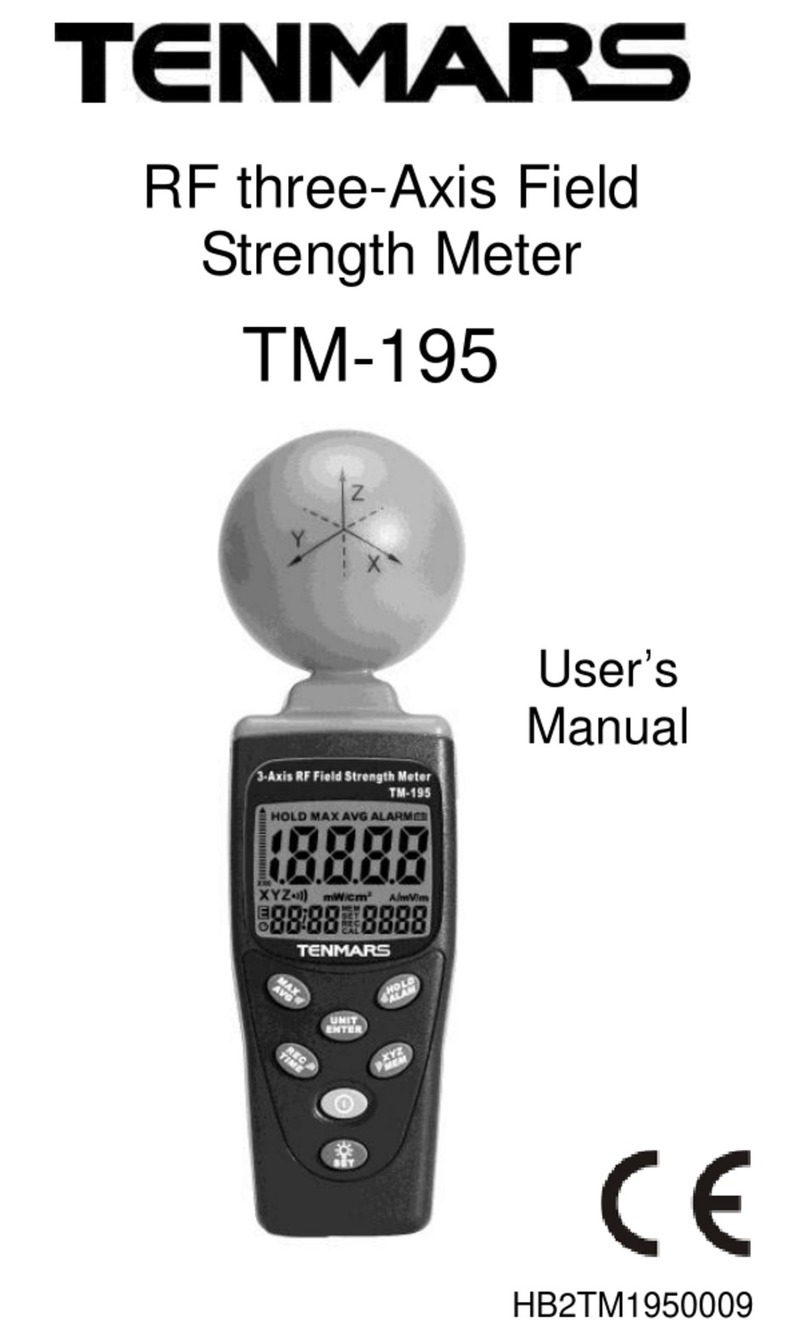
Tenmars
Tenmars TM-195 user manual
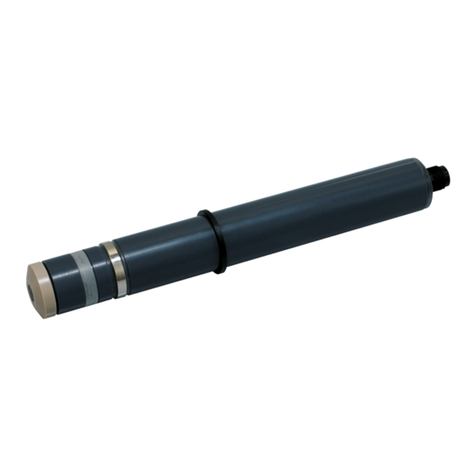
triOS
triOS Free Chlorine operating instructions

H. HERMANN EHLERS
H. HERMANN EHLERS CONTOIL VZO Series Mounting and operating instructions
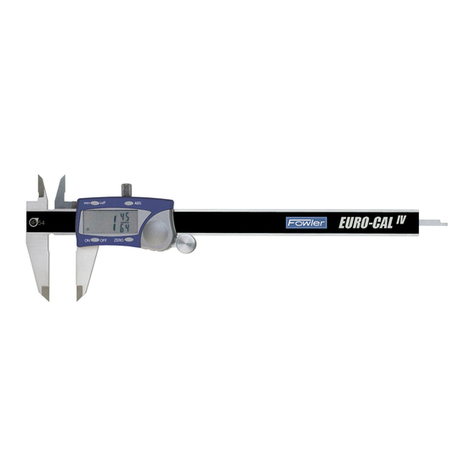
Fowler
Fowler 54-100-330-1 quick guide

DeWalt
DeWalt DW040 Original instructions

Blue-White industries
Blue-White industries Sonic-Pro S6A Series operating manual
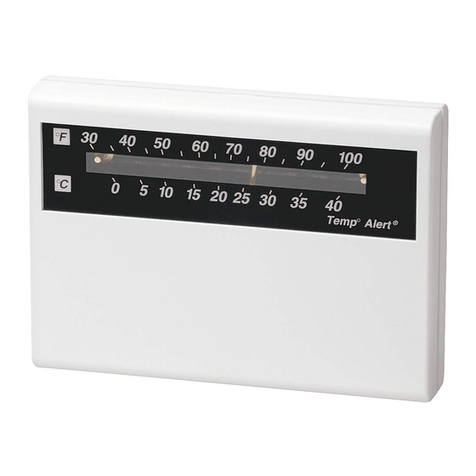
Winland Electronics
Winland Electronics TempAlert MTA-1 quick start guide
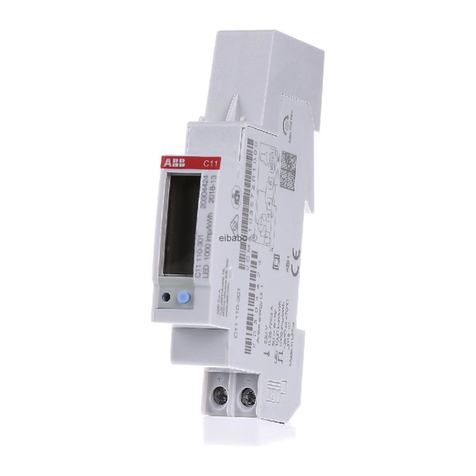
ABB
ABB C11 user manual

wtw
wtw Cond 1970i operating manual
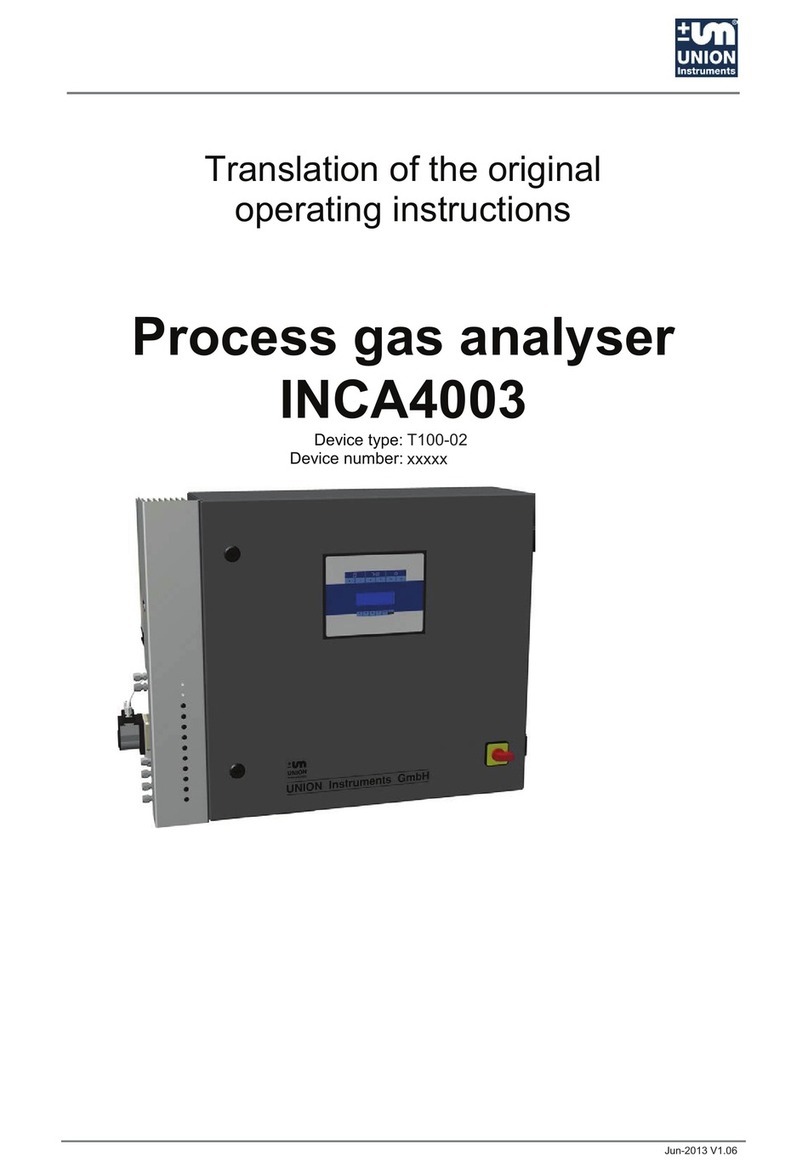
Union Instruments
Union Instruments INCA4003 Translation of the original operating instructions
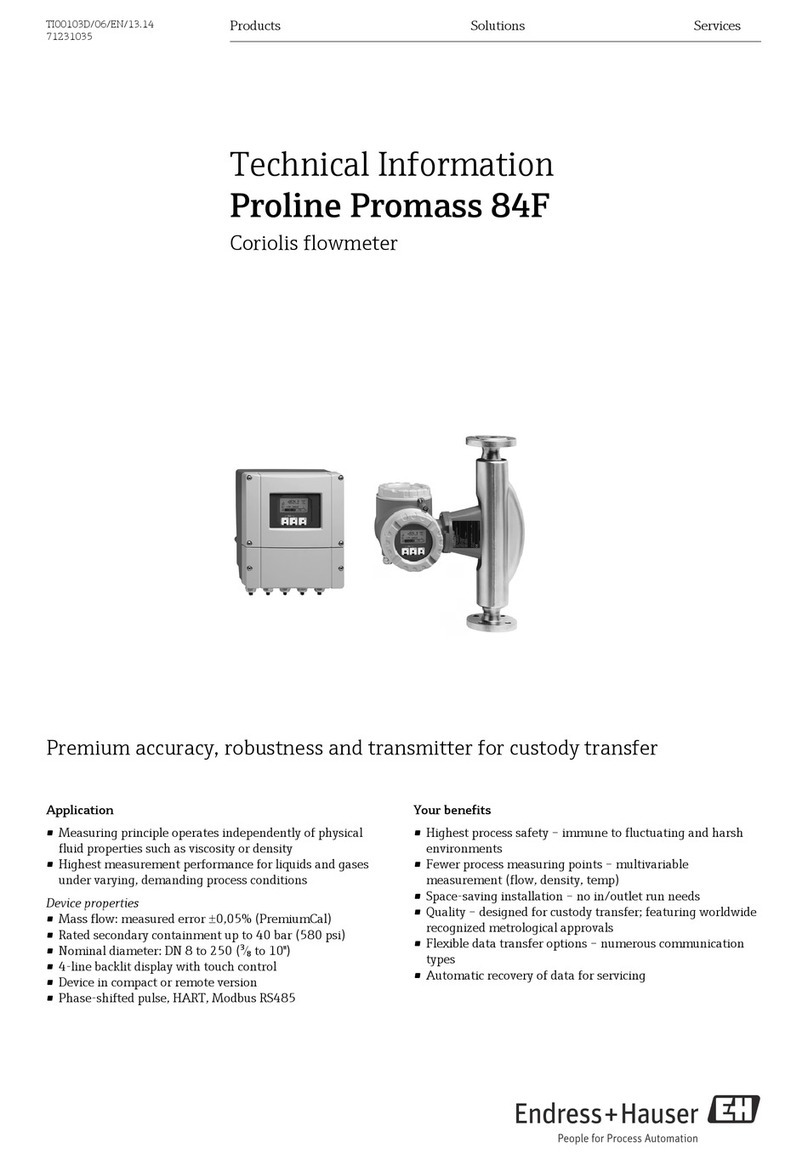
Endress+Hauser
Endress+Hauser Proline Promass 84F technical information
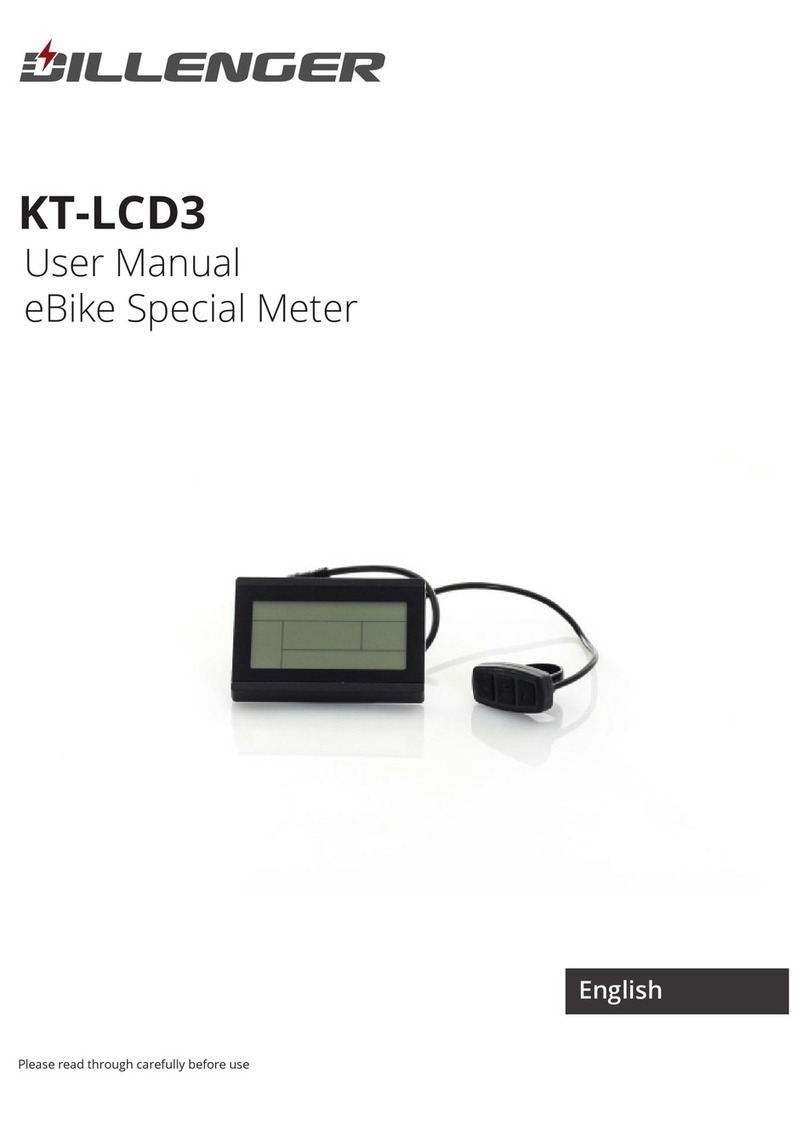
Dillenger
Dillenger KT-LCD3 user manual
